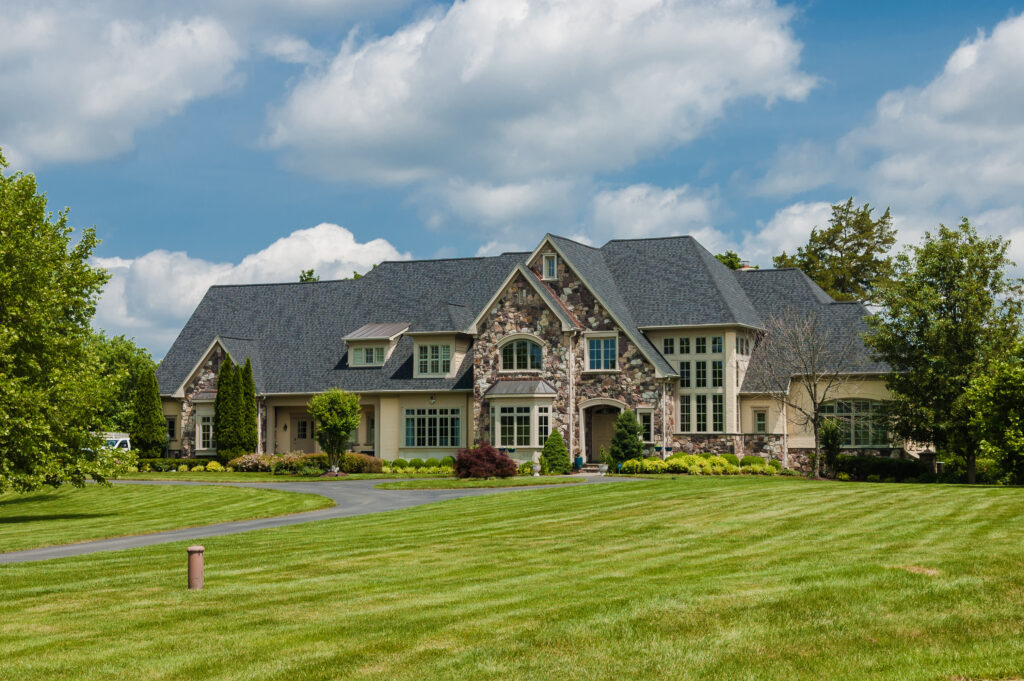The FWD #216 • 800 Words
For those dreaming of a dedicated funding stream, steeper sales taxes for higher-value homes seem promising.
It’s difficult to find dedicated streams of revenue for affordable housing that most people can agree on. In some places, just suggesting a tax increase is grounds to be booted out of office. But in recent years, more local and state governments have created progressive tax policies that levy higher transfer fees for more expensive homes— some call this a mansion tax.
According to a report by the Institute on Taxation and Economic Policy (ITEP) and the Center on Budget and Policy Priorities, seven states currently have progressive real estate transfer tax rates: Connecticut, Hawaii, New Jersey, New York, Rhode Island, Vermont, and Washington. Additionally, some localities have implemented their own versions of progressive transfer taxes.
These policies typically place a steeper tax rate on high-value property sales, with the additional revenue often earmarked for affordable housing initiatives. This approach has been implemented or considered in many places as a tool to address housing affordability and community inequities.
One notable example is Los Angeles, where voters passed a ballot initiative in 2022 called Measure ULA. This policy introduced a 4% tax on property sales over $5 million and a 5.5% tax on sales above $10 million. Since its implementation in April 2023, the Los Angeles Times reports that this tax has generated approximately $375 million for affordable housing and homelessness initiatives.
The tax has faced multiple attempts to invalidate it from real estate interest groups, but it remains in place today. And while the revenue so far is less than originally expected, ULA funding has positively impacted thousands of renters throughout the city. ULA-supported programs include legal assistance for households facing eviction, rental assistance for seniors and persons with disabilities, and other similar initiatives.
The purpose of these taxes is to create a new, dedicated funding stream for affordable housing initiatives. Proponents argue that this approach targets those who can most afford to contribute and may help cool down the high-end market, potentially influencing overall housing prices.
The new funding could potentially allow for increased affordable housing stock, expanded rental assistance programs, or investment in preserving existing affordable units.
However, it’s important to note that the impact can vary depending on local market conditions and the specifics of the policy. It obviously doesn’t make sense for a community with limited opportunities for high-value property sales to implement a mansion tax.
And implementing a mansion tax is not without its challenges. Political resistance to new taxes can be significant and opposition from industry groups can end such initiatives. There are also complex decisions to be made regarding threshold levels, tax rates, and the specific allocation and oversight of funds.
One important factor to consider is the potential effects on new apartment construction, if the tax does not make exceptions for multi-family properties. Back in LA, where ULA applies to all types of residential development, real estate backers assert the measure has led to stalled commercial and multifamily markets.
Housing researchers, on the other hand, point to evidence suggesting those claims might be overstated. Nevertheless, such concerns led the City of Santa Monica to pursue a new ballot initiative that would exclude multifamily properties from their mansion tax.
In some cases, legal challenges have arisen. For example, in Santa Fe, New Mexico, a court struck down a voter-approved mansion tax in May 2024, ruling that city officials lacked the legal authority to impose such a tax.
Interested in what a mansion tax might do in your community? Don’t get your hopes up anytime soon. Under Va. Code § 58.1-814, local recordation tax rates are capped at one-third of the state transfer rate, which is $0.25 per $100 of fair market value. That same code does not enable localities to impose different rates based on property values, either. To open up possibilities, new legislation is necessary.
Still, cities and counties in Virginia can use their transfer fees any way they like. Arlington County takes advantage of this by dedicating a portion of its recordation tax revenue to its Affordable Housing Investment Fund. From FY2018 through FY2022, cumulative recordation fee contributions totaled nearly $6.5 million. For full context, however, those fees still made up just 4% of all revenue into the fund.
In the meantime, demand for luxury homes continues to increase in many parts of the state. Northern Virginia, the Charlottesville region, and coastal areas like Virginia Beach see some of our highest priced housing, and some of the greatest affordability challenges.
As support for mansion taxes picks up in other states, Virginia localities in need of dollars for affordable housing might seek permission from the General Assembly for new powers to make their wealthiest to do their fair share for the community.
